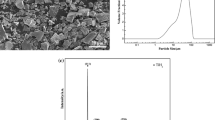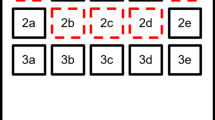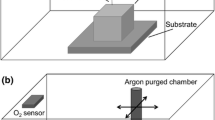Abstract
In collaboration with Ametek and Commonwealth Scientific and Industrial Research Organization (CSIRO), Oak Ridge National Laboratory has evaluated three different methods for converting titanium hydride–dehydride (HDH) powder into a thin-gauge titanium sheet from a roll-compacted preform. Methodologies include sintering, followed by cold rolling and annealing; direct hot rolling of the roll-compacted sheet; and hot rolling of multiple layers of roll-compacted sheet that are encapsulated in a steel can. Fabrication of fully consolidated sheet has been demonstrated using all three methods, and each processing route has the ability to produce a sheet that meets ASTM B265 specifications. However, not every method currently provides a sheet that can be highly formed without tearing. The degree of sintering between powder particles, postprocessing density, and the particle-to-particle boundary layer where compositional variations may exist have a significant effect on the ability to form the sheet into useful components. Uniaxial tensile test results, compositional analysis, bend testing, and biaxial testing of the titanium sheet produced from hydride–dehydride powder will be discussed. Multiple methods of fabrication and the resulting properties can then be assessed to determine the most effective and economical means of making components for industrial applications.


Similar content being viewed by others
References
J.S. Montgomery, M.G.H. Wells, B. Roopchand, and J.W. Ogilvy, JOM 49 (5), 45 (1997).
B.E. Hurless and F.H. (Sam) Froes, AMPTIAC Q. 6(2), 3 (2002).
Department of Defense, China’s Impact on Metals Prices in Defense Aerospace (Industrial Policy) (Washington, DC: Department of Defense, Office of the Deputy Under Secretary of Defense, 2005).
S. Luckowski, “Lightweight Weapons: The Increased Use of Titanium in Army Armament Systems” (Paper presented at the 19th Annual International Titanium Association Conference & Exhibition, Monterey, California, USA, October 12–14, 2003).
E. Kraft, Department of energy internal report: industrial markets for titanium manufacturing energy consumption and impact of lower cost processing (Vancouver: EHK Technologies, 2007).
T. Muth and J. Williams, Department of Energy Internal Report: Energy Analysis for Emerging Economical Titanium Production Technologies (Oak Ridge: Oak Ridge National Laboratory, 2011).
J.D.K. Rivard, et al., JOM 57 (11), 56 (2005).
G.M.D. Cantin, P.L. Kean, N.A. Stone, R. Wilson, M.A. Gibson, M. Yousuff, D. Ritchie, and R. Rajakumar, Powder Metall. 54, 188 (2011).
Nigel A. Stone, G.M. Delphine Cantin, Mark A. Gibson, Trevor Kearney, Sri Lathabai, David Ritchie, Robert Wilson, Merchant Yousuff, Raj. Rajakumar, and Kevin Rogers, Mater. Sci. Forum 618–619, 139 (2009).
Acknowledgements
ORNL’s successful research in titanium sheet fabrication has been made possible by multiple entities over several years. Early roll compaction research was sponsored by the Defense Advance Research Projects Agency, Defense Science Office. The consolidation of sheet as part of process route 1 was funded by the Office of Secretary of Defense, Industrial Policy and managed by the Defense Logistics Agency as part of the Industrial Based Innovation Funds. Research regarding the consolidation of powder into sheet for process route 2 (ORNL’s portion), and process route 3 and property testing was funded by the U.S. Department of Energy, Office of Energy Efficiency and Renewable Energy (EERE), Advanced Manufacturing Office, under contract DE-AC05-00OR22725 with UT-Battelle, LLC. ORNL would also like to thank industrial partners Solar Atmospheres, Inc. and Niagara Specialty Metals for their respective contributions. Thanks are given to ORNL team members Dave Harper, Kevin Harper, Greg Cox, Larry Lowe, Michael Clark, Ron Swain, Alina Lowden, Jackie Mayotte, Hiram Rogers, John Rivard, and Rita Ayers. The CSIRO Titanium Sheet team includes the following members: Daniel East, Mark Gibson, Peter Kean, David Ritchie, Robert Wilson and Merchant Yousuff.
Author information
Authors and Affiliations
Corresponding author
Rights and permissions
About this article
Cite this article
Peter, W.H., Muth, T., Chen, W. et al. Titanium Sheet Fabricated from Powder for Industrial Applications. JOM 64, 566–571 (2012). https://doi.org/10.1007/s11837-012-0309-1
Published:
Issue Date:
DOI: https://doi.org/10.1007/s11837-012-0309-1




